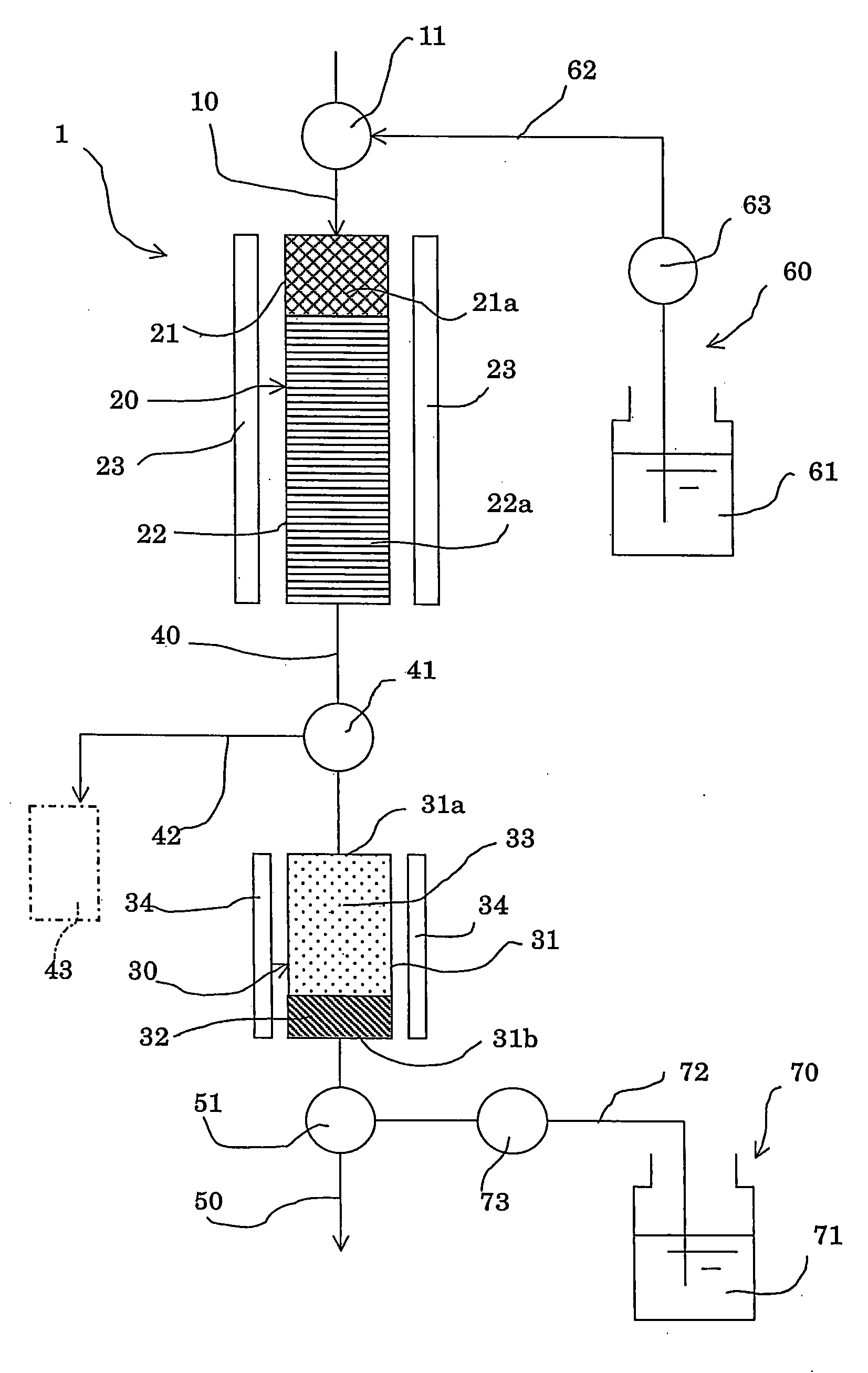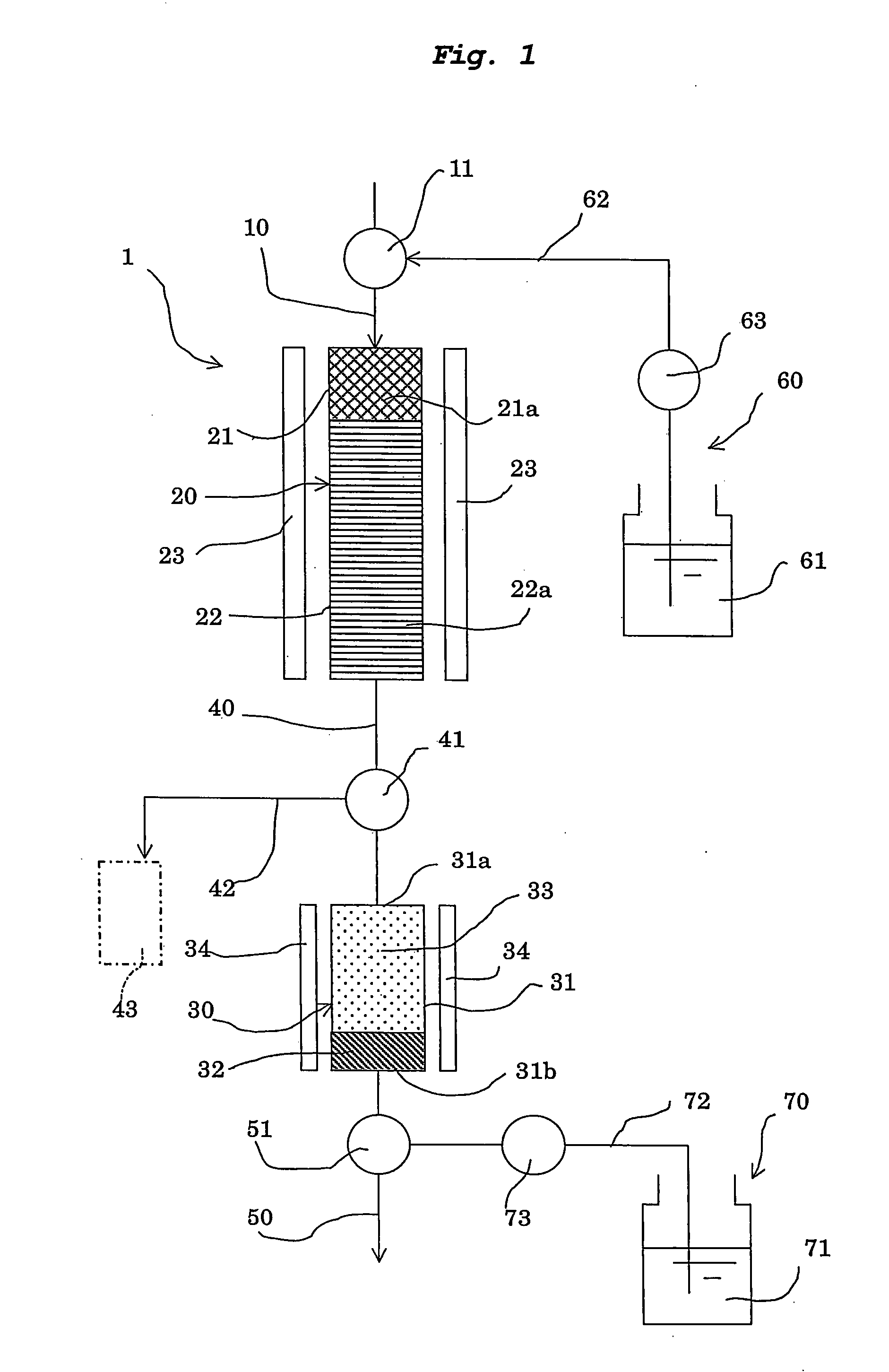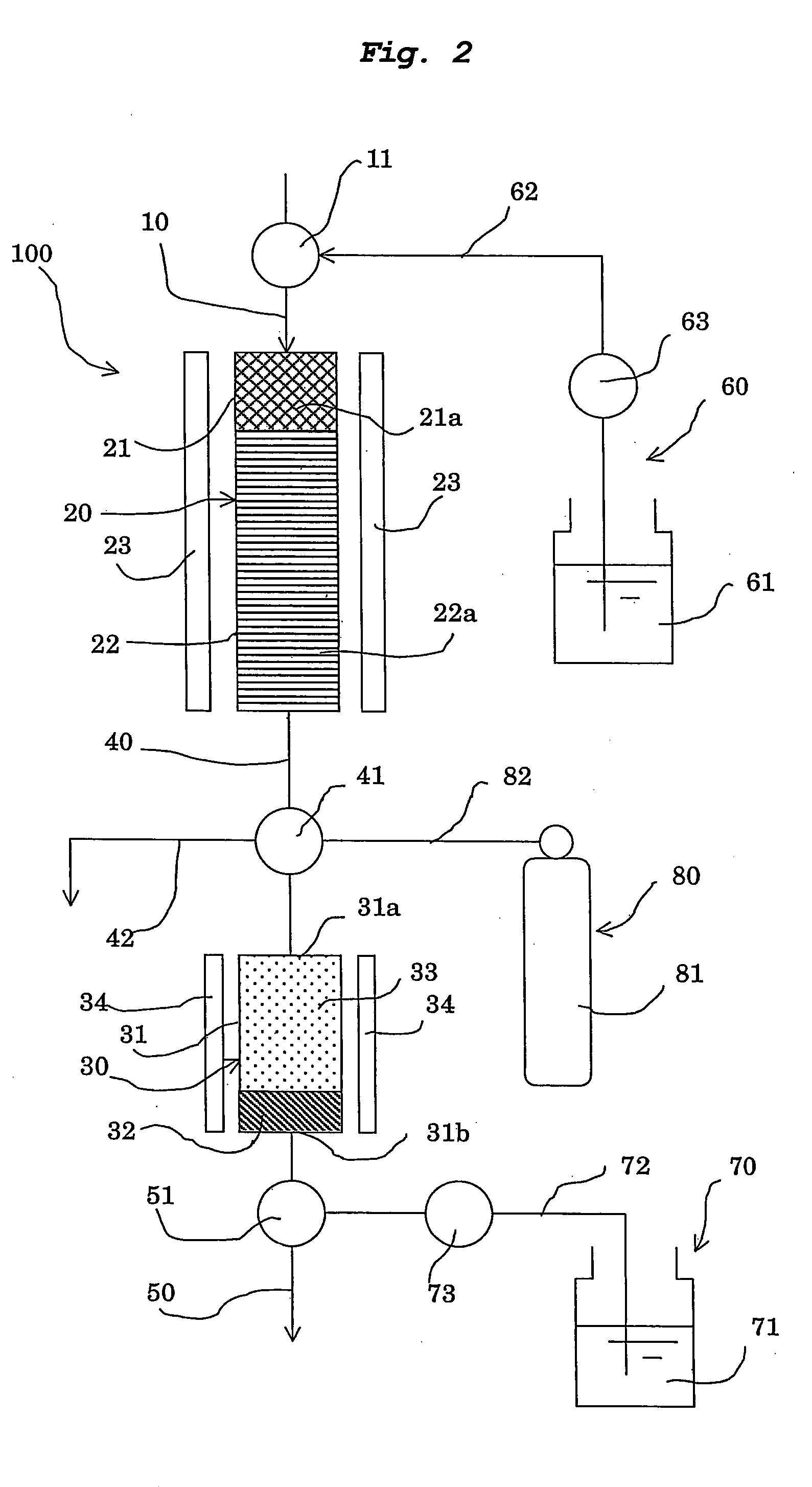Method for preparing sample for analysis of dioxins
a technology of dioxins and sample preparation, which is applied in the field of preparation of sample for analysis of dioxins, can solve the problems of increasing the amount of extract solution, difficult to analyze the extract solution, and complicated and cumbersome operation by an experienced operator, and achieves the effect of high reliability and quick extraction
- Summary
- Abstract
- Description
- Claims
- Application Information
AI Technical Summary
Benefits of technology
Problems solved by technology
Method used
Image
Examples
embodiment 1
Modification of Embodiment 1
[0089](1) An extracting solvent to be pooled in the second solvent tank 71 of the second solvent supply section 70 may be a mixed solvent of toluene and an aliphatic hydrocarbon solvent. While such a mixed solvent can easily extract various dioxins trapped in the carbon material layer 32, the mixed solvent cannot easily extract polychlorinated naphthalene which may be trapped in the carbon material layer 32, and thus a sample for analysis in which polychlorinated naphthalene is effectively removed can be prepared.
[0090]The aliphatic hydrocarbon solvent used in the mixed solvent is not specifically limited, and is preferably a non-polar solvent having 5 to 10 carbon atoms, for example, n-hexane, isooctane, nonane and decane. Particularly, n-hexane is preferred. The aliphatic hydrocarbon solvent may be the same as or different from the aliphatic hydrocarbon solvent to be pooled in the first solvent tank 61.
[0091]Also, the content of toluene in the mixed sol...
embodiment 2
[0092]Another aspect of an apparatus for preparing a sample for analysis of dioxins according to the present invention will be described with reference to FIG. 2. In the figure, a preparation apparatus 100 is an apparatus for preparing a sample for analysis suited to analysis of dioxins by a bioassay method, which is different from the preparation apparatus 1 of Embodiment 1 in a gas supply section 80, a second selector valve 41, and an extracting solvent pooled in a second solvent tank 71. Therefore, the preparation apparatus 100 is constituted similarly to the preparation apparatus 1 of Embodiment 1, except for such differences. In FIG. 2, the same part of the preparation apparatus 1 of Embodiment 1 is expressed by the same reference numeral. Hereinafter, the difference between the preparation apparatus 100 and the preparation apparatus 1 of Embodiment 1 will be described.
[0093]The gas supply section 80 includes a gas cylinder 81 for an inert gas such as nitrogen, and a gas supply...
reference example 1
[0106]A sample for analysis of dioxins was prepared from the solution A of dioxins. Herein, the solution A of dioxins was supplied in a multilayer silica gel column packed with a silver nitrate silica gel, a sulfuric acid silica gel and a silica gel in a multi-layered state, and the solution A of dioxins was subjected to a purification treatment by allowing n-hexane to flow through the multilayer silica gel column. Then, the n-hexane solution of dioxins obtained by the purification treatment was concentrated to obtain a sample for analysis of dioxins.
[0107]The resulting sample for analysis was analyzed using a high-resolution GC / MS (resolving power=10,000 or more). As a result, it was found that the proportion of dioxins was 56.5% and the proportion of polychlorinated naphthalene was 43.5% based on the total amount of dioxins and polychlorinated naphthalene. The percentage “%” as used herein is in terms of a peak area ratio.
PUM
| Property | Measurement | Unit |
|---|---|---|
| pore size | aaaaa | aaaaa |
| particle size | aaaaa | aaaaa |
| temperature | aaaaa | aaaaa |
Abstract
Description
Claims
Application Information
 Login to View More
Login to View More - R&D
- Intellectual Property
- Life Sciences
- Materials
- Tech Scout
- Unparalleled Data Quality
- Higher Quality Content
- 60% Fewer Hallucinations
Browse by: Latest US Patents, China's latest patents, Technical Efficacy Thesaurus, Application Domain, Technology Topic, Popular Technical Reports.
© 2025 PatSnap. All rights reserved.Legal|Privacy policy|Modern Slavery Act Transparency Statement|Sitemap|About US| Contact US: help@patsnap.com



